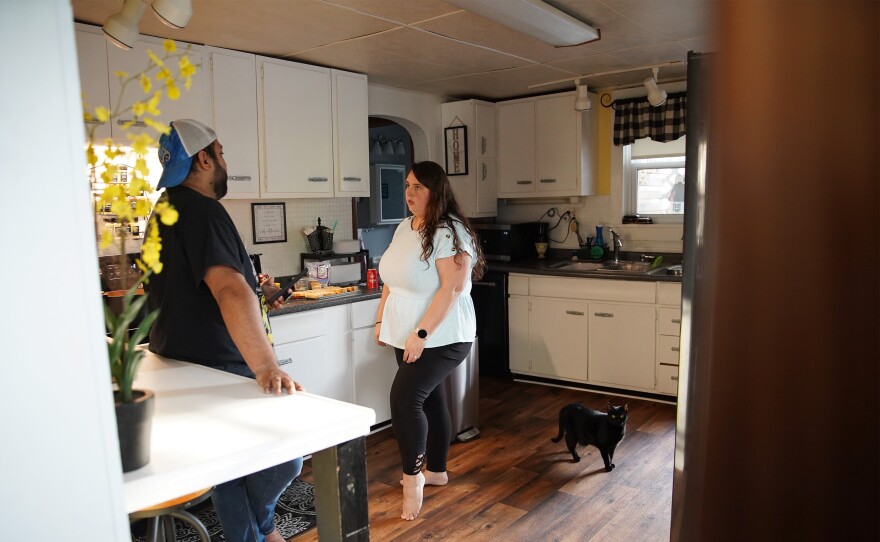Kelly Cunningham loves to cook.
Tonight, she has pasta on the stove. In her kitchen in Mount Vernon, 50 miles northeast of Columbus, she cuts up peppers for a pan of sizzling meat. She inherited this love from her grandmother – who passed down her recipes and her love of garlic salt.
But feeding her family of four has become stressful for Cunningham in recent months.
“Towards the end of the month, we do a lot of ‘fend for yourself’ nights, where we feed the kids a full meal, and then we just kind of snack on whatever we have available,” Cunningham said. “Because that's what we will have to do.”
Around 600,000 Ohioans saw their food budgets get slashed in March. That’s when federal pandemic aid ended, and families on SNAP, also known as food stamps, lost $95 or more in those benefits.
With food prices high, families like Cunningham’s are struggling to make ends meet.
She and her husband, Tyler Tanner, depend on food stamps to feed their two kids, 4-year-old Gabriel and 2-year-old Dawson. They’ve received the assistance since 2019. But, for the last three years, they’ve received an additional $250 dollars each month in COVID-19 emergency funds.
“It was very, very, very relieving,” she said. “We would actually go to the store together in those times because he was so excited that he didn't have to stress about it either.”
That’s changed since the allotments ended. Now, she dreads going to the supermarket. It’s mentally exhausting.
“Knowing that it might not be enough come the end of the month. Seeing that you're buying all of this, but how long is it going to last?” Cunningham said.
They’ve had to make sacrifices elsewhere to come up with the money. Sometimes that means no Wi-Fi for a month. Other times, they work at Instacart for some extra cash. That’s on top of Tanner’s full time job as a heavy machinery operator and the $743 they get in SNAP benefits each month.
“There will come a day when we will no longer need it,” Tanner said. “But right now, it's been the greatest lifesaver we can have.”
Still, it hasn’t been enough.
They’ve had to rely on help from their family and supplement their shopping with visits to the food pantry to keep their fridge full. It’s one many other families have had to make. Mid-Ohio Food Collective has seen a 30 percent increase in new customers from this time last year.
Tanner brings a plate to Gabriel, then returns to the kitchen to talk with Cunningham about what bills still need to be paid. Gabriel watches Scooby Doo, unaware of the conversation. His brother Dawson sits in a high chair across the table, waving colby jack cheese in the air.
Every choice Tanner and Cunningham make is for the two of them. And those choices have gotten harder since pandemic aid ended.
“Do we want to feed our kids? Do we want to pay the bills? Do we want to keep the lights on? Do we want to make sure that Gabriel has his favorite snacks?” Tanner said.
“We play that game way too often,” Cunningham added. “And it shouldn't be the case.”
Without additional assistance, they’ll keep playing that game, balancing their budget and doing whatever they need to, to keep their family fed.
Correction: This story has been updated to reflect that Mid Ohio Food Collective has seen a 30 percent increase in new customers.












